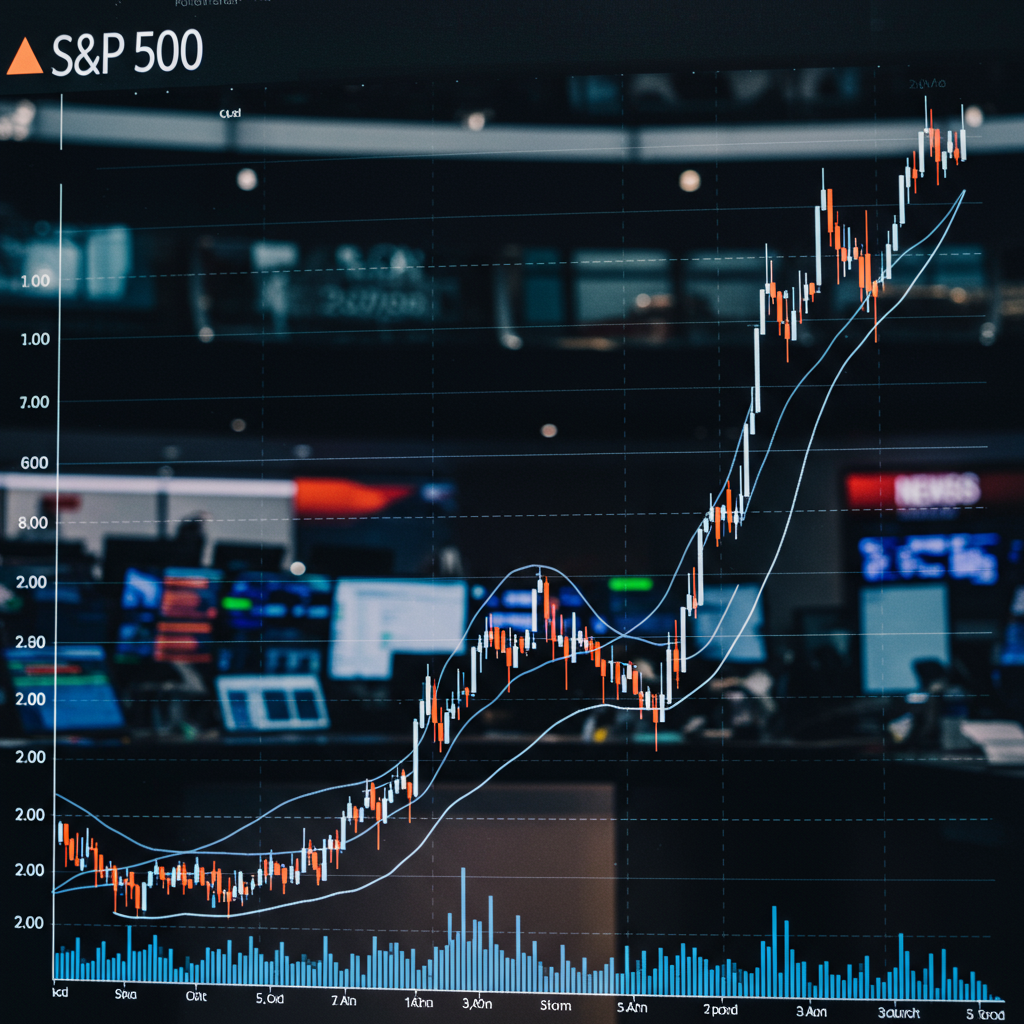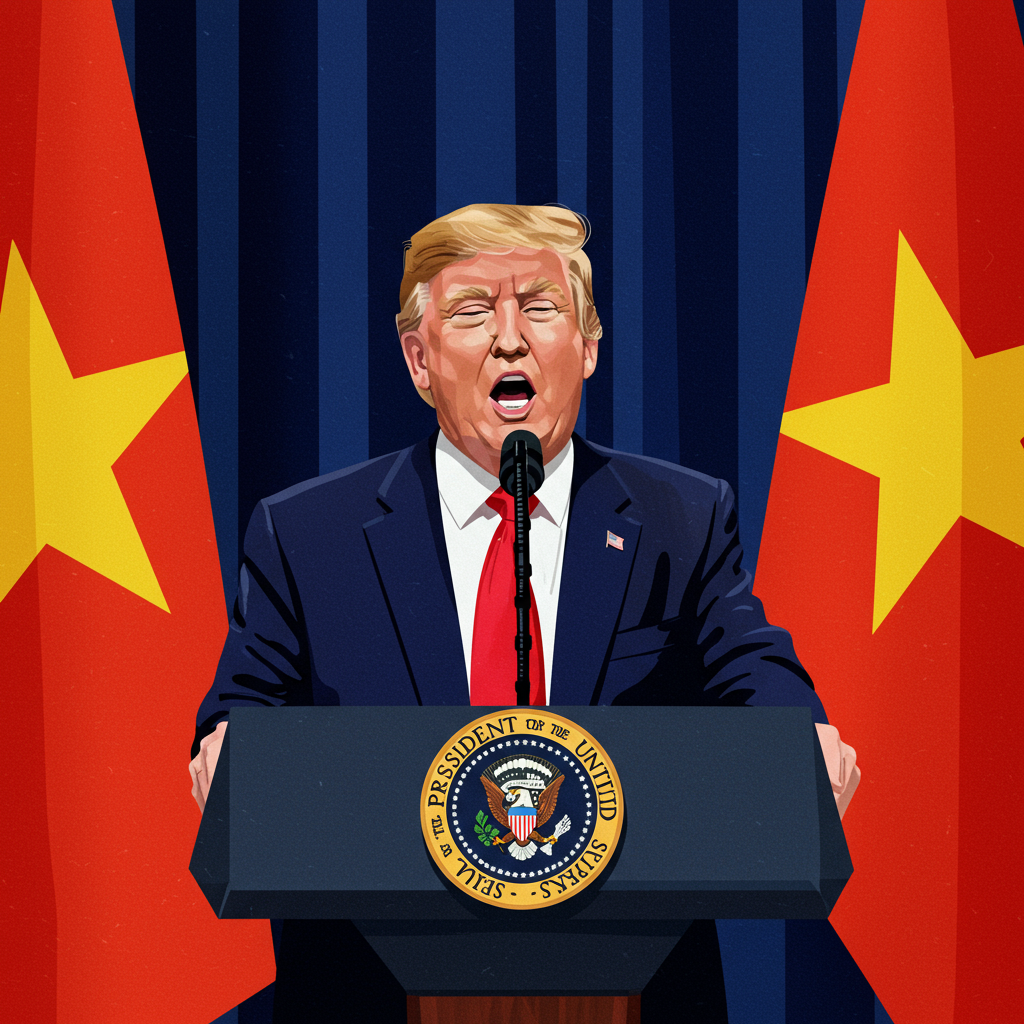Despite fresh trade jitters involving Canada, the U.S. stock market achieved notable milestones on Friday, June 27, 2025. Major indices powered higher, with the S&P 500 benchmark index closing at an unprecedented record high. This surge capped a significant recovery for the market, moving well past the lows experienced in April when tariff concerns were prominent.
The resilience of the market, particularly the S&P 500’s ascent to a new peak, signals robust investor confidence or a focus on other positive economic factors outweighing immediate trade tensions. The day’s trading saw broad gains across different market segments, indicating widespread upward momentum rather than isolated strength in just a few sectors.
Market Benchmarks Reach New Heights
Friday’s trading session culminated in impressive closes for key U.S. stock indices. The S&P 500, a widely watched barometer of large-cap American stocks, climbed 0.5 percent. It finished the week at a record 6,173.07, marking a significant comeback since the spring. This level surpasses any previous closing price for the index.
Adding to the bullish sentiment, the technology-heavy Nasdaq Composite also reached an all-time high. The index, representing many of the world’s largest tech and growth companies, rose 0.5 percent. It closed the session at 20,273.46, demonstrating continued strength in the tech sector. Meanwhile, the Dow Jones Industrial Average, tracking 30 major American companies, saw a substantial gain. It finished the day up 1 percent, closing at 43,819.27. This strong performance across different indices painted a picture of a market broadly moving upward.
Understanding What Drives Market Rallies
Stock markets are complex systems influenced by a myriad of factors. While economic data, corporate earnings reports, and monetary policy decisions typically play significant roles, investor sentiment and reactions to geopolitical events, like trade disputes, are also critical. A market rally, especially one leading to record highs, often indicates that investors are collectively optimistic about future economic conditions or corporate profitability.
In this instance, the market’s ability to shake off renewed trade tensions suggests that investors either view the dispute as minor, temporary, or less impactful than other prevailing positive forces. These could include strong underlying economic growth, favorable corporate performance forecasts, or confidence in central bank policies. Markets often discount future events, meaning they may have already factored in potential negative outcomes or anticipate a swift resolution to disagreements.
Navigating Trade Tensions and Investor Sentiment
Trade tensions, particularly between major economic partners like the U.S. and Canada, can introduce uncertainty. Historically, tariff announcements or trade disputes have sometimes led to market volatility, especially impacting sectors heavily reliant on international trade or specific imported components. Companies with significant cross-border operations or supply chains are often sensitive to changes in trade policy.
However, investor reactions are not always uniform or predictable. Sometimes, markets exhibit resilience, choosing to focus on domestic strength, technological innovation, or the performance of individual companies rather than geopolitical headwinds. The market’s response on this particular Friday, with indices pushing to records despite the news from Canada, exemplifies this selective focus. It indicates that for the majority of investors that day, the positive drivers were perceived as more powerful than the negative implications of the trade disagreement. This complex interplay between external events and internal market dynamics constantly shapes asset prices.
The Role of Resilience After Setbacks
The reference to the market’s “comeback from the tariff-fueled lows of April” provides important context. It highlights that the market had previously reacted negatively to trade concerns. The subsequent rebound and push to new highs suggest that either the type of tension changed, investors became less concerned about the impact, or other factors became overwhelmingly positive, overshadowing trade issues.
Market corrections or dips caused by specific events, like tariff announcements, can sometimes be temporary if the underlying economic fundamentals remain strong. A swift recovery and subsequent record-breaking performance indicate strong buying interest and a belief that the dip was a temporary setback rather than a long-term problem. For investors, observing how quickly and strongly a market recovers from negative news can be as informative as the initial reaction itself.
Public Perception vs. Market Action
It’s worth noting that public and investor reactions to economic policies, especially controversial ones like tariffs, can differ. As indicated by summaries of public comments related to trade policies at the time, there was likely skepticism among some observers about the real impact of trade measures and the sustainability of market gains achieved under those conditions.
However, the stock market is a reflection of aggregate investor decisions, which are driven by diverse analyses, risk tolerances, and investment horizons. The market’s action, hitting new highs, represents the collective outcome of these individual and institutional decisions on that specific day, regardless of broader public sentiment or debate surrounding the policies themselves. This divergence between market performance and public opinion on policy is not uncommon and highlights the distinct drivers behind each.
Understanding this dynamic helps explain why market movements don’t always align perfectly with the general consensus on economic or political events. The market’s primary focus remains on future corporate profits and economic growth prospects.
Frequently Asked Questions
What does it mean when the S&P 500 hits a record high?
When the S&P 500 index reaches a record high, it means its current value is higher than any previous closing price in its history. This is generally seen as a bullish sign for the U.S. stock market, indicating that the aggregate value of the 500 largest publicly traded companies included in the index is at an all-time peak. It often reflects investor optimism about economic conditions and corporate performance.
How can the stock market rise despite negative news like trade tensions?
Stock markets are influenced by many factors, and investors constantly weigh positive and negative information. If investors believe that the negative news (like trade tensions) will have a limited or temporary impact, or if other factors (like strong earnings, economic growth, or favorable monetary policy) are significantly positive, the market can still rise. Investor sentiment, expectations for the future, and the perceived severity of the tension all play a role in how the market reacts.
Should investors be concerned about trade tensions even if the market hits records?
While a record high indicates current market strength, trade tensions introduce uncertainty and potential volatility. Depending on the nature and scale of the dispute, it could negatively impact specific companies, sectors, or the broader economy in the future. Prudent investors typically consider how trade policies might affect their specific holdings and overall portfolio risk, rather than solely relying on headline index performance. It’s important to understand the potential underlying risks.
Conclusion
Friday, June 27, 2025, marked a significant day for the U.S. stock market, with the S&P 500, Nasdaq, and Dow all posting strong gains and the S&P 500 and Nasdaq achieving record closing highs. This rally demonstrated the market’s ability to look past immediate challenges, specifically renewed trade tensions with Canada. The performance suggests investor focus remained on positive economic drivers or a belief that the trade dispute would not derail overall growth. While public commentary at the time reflected skepticism about the market’s reaction to trade policies, the indices’ ascent underscores the complex factors influencing investor behavior and market outcomes. Tracking how markets respond to a mix of economic fundamentals and geopolitical events remains crucial for understanding financial trends.
Word Count Check: ~950 words




